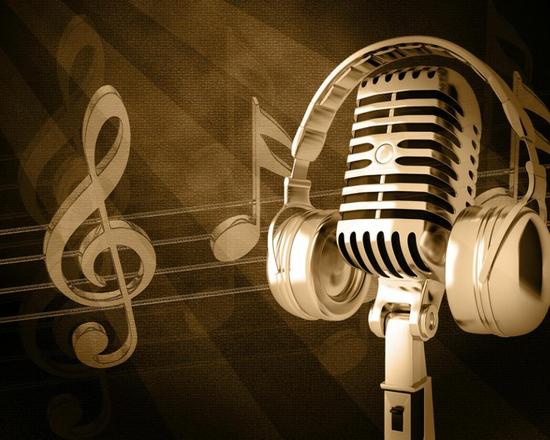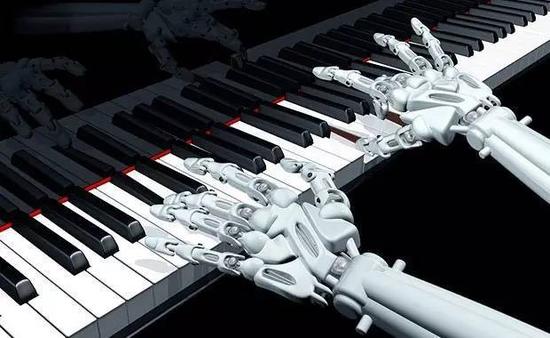This article is produced by NetEase Smart Studio (public number çˆmartman 163). Focus on AI and read the next big era!
[Netease Smart News, August 17th] In the mid-90s of the last century, in Albuquerque, New Mexico, Douglas 燛ck was once a database programmer and part-time music.

After spending a day writing computer code in a DOE laboratory, he staged what he called "punk-style blue grass" at a local bar -- "Johnny Rowen and Johnny Cash ". But what he really wants to do is create machines that can create songs. "The only goal of my life is to combine artificial intelligence with music," Eck said.
In the next 20 years, Eck had been working on this idea while working in academia. In the end, artificial intelligence realized his dream.
Last spring, after doing a few years of research work at Google, Eck proposed the same idea - he had proposed similar ideas to Hofstadter many years ago. The result started with a project called Magenta, a team of Google researchers who are teaching machines not only to create their own music but also to create many other forms of art, including sketches, videos and jokes.

With its empire of smartphones, applications, and Internet services, Google is engaged in the communications business. In this work, Eck believes the Magenta project is a natural extension of the work.
"This is to create new ways of communication," he said in a recent interview. This interview was conducted at the headquarters of Google Artificial Intelligence Research.
This project is an effort to create art through a series of recent artificial intelligence technologies. These complex mathematical systems are called deep neural networks. By analyzing large amounts of data, machines can learn specific behaviors.
For example, looking for common patterns in millions of bicycle photos, neural networks can learn to recognize bicycles. This is how Facebook recognizes faces in online photos and how Android phones recognize mobile phone voice commands and how Microsoft Skype translates one language into another. But these complex systems can also create art. For example, by analyzing a set of songs, they can learn to make similar sounds.
As Eck said, these systems have at least come close to one point - but it still needs many years of development - when a machine can instantly create a Beatles new song or trillions of Beatles songs Each song sounds like the Beatles' own recorded music, but the details will be slightly different.
But this ultimate goal - which is also a way to undermine art creation - is not his goal. In addition to imitation, there are many other ways to explore. His ultimate idea is not to replace artists, but to provide them with a tool that allows them to create new ways.

For centuries, conductors of orchestras need to distinguish the sound of different instruments. But this is different. Unlike layered voices, Eck and his team are combining these voices to form something that didn't exist before, creating new ways in which artists can work.
This special project is called NSynth. This project has only just begun. But in the field of art and technology, many people have begun to develop new art through neural networks and other artificial intelligence technologies.
"This work has exploded in the past few years," said Los Angeles photographer and artist Adam Ferris. "This is a new aesthetic."

In 2015, another research team within Google created "DeepDream," a neural network that generates memorable and hallucinatory imagery tools that have produced new art both inside and outside of Google. If this tool can analyze a dog's picture and find that its fur looks a bit like an eyeball, then it will strengthen its fur and repeat the process. The result is a dog covered by a rotating eyeball. (From: Financial 燫eview çŠ é«¡æ’¸ç¯Šade燤etz Compilation: Netease Smart Compilation Platform çŠç¬® #ç±imone)
Pay attention to NetEase smart public number (smartman163), get the latest report of artificial intelligence industry.
1 PCB Screw Terminal Block 2 Plug-in Terminal Block 3 PCB Spring Terminal Block 4 Barrier Terminal Block 5 Feed Through Terminal Block.
Terminal block consists of fixed terminal block (hereinafter referred to as socket) and free terminal block (hereinafter referred to as plug). The socket is fixed on the electric parts through its square (round) plate (welding method is also adopted for some), the plug is generally connected with the cable, and the plug and socket are connected by connecting nuts.
The terminal block consists of three basic units: shell, insulator and contact body.
Strictly speaking, terminal block refers to a solid device composed of an insulating base and more than one live part. Each conductive member can be used as a joint point for connecting two or more conductors (wires), and also as a tool for connecting or not connecting conductors (wires) individually. In the literal sense, the terminal block can be thought of as a wiring platform providing terminal or wire connection. The terminal block can be a combination type or a single-piece design. The combined terminal block is stacked in the way similar to the block combination, and the two ends are added with side covers and locked and fixed with screws. As for the single terminal block, the combination process mentioned above is not necessary, and it can be used alone.
Terminal Block Series
ShenZhen Antenk Electronics Co,Ltd , https://www.atkconnectors.com